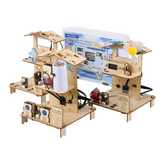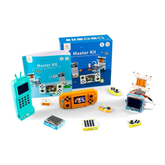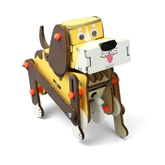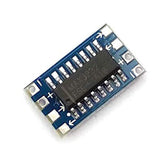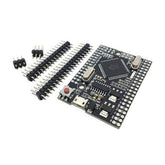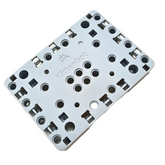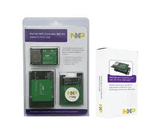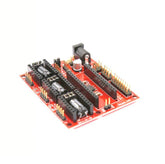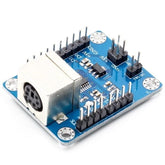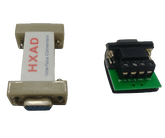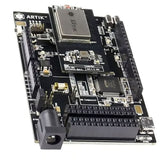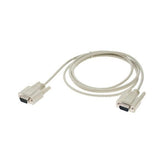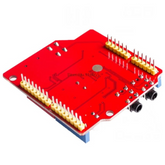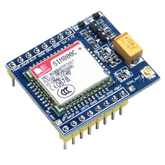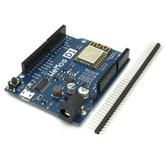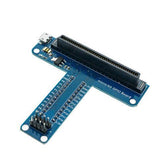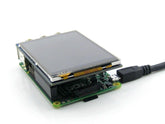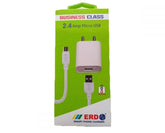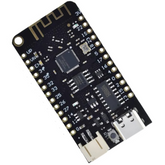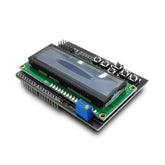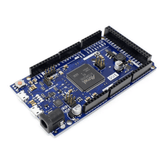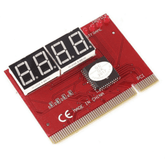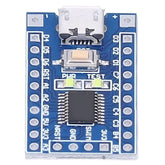-
MAX3232 Mini RS232 to TTL ModuleMAX3232 Mini RS232 to TTL Module The Serial Port RS232 to TTL 5V Signal Converter Module is a professional module for projects requiring PC/Laptop RS232 interface to 5V TTL logic. This module converts signals between RS232 voltage levels and TTL voltage levels. It is bi-directional,...
- Rs. 30
Rs. 49- Rs. 30
- Unit price
- per
Save Rs. 19 -
Arduino Mega 2560 Pro ATmega2560 compatible BoardMega 2560 Pro CH340G ATmega2560 Board The Mega Pro Embed CH340G / ATmega2560 board is based on the ATmega2560 microcontroller and the USB-UART adapter CH340. The board is compatible with Arduino Mega 2560. The Mega 2560 is an excellent solution for building exciting projects based...
- Rs. 1,447
Rs. 1,699- Rs. 1,447
- Unit price
- per
Save Rs. 252 -
Micro:Bit V2.2 Expansion Board HolderMicro:Bit V2.2 Expansion Board Holder (Color May Vary) Micro:Bit Development Expansion Board Holder is compatible with Micro: bit, LEGO. The holder comes with good quality plastic material. The dimension of this Holder is (length x breadth x height) 88 x 64 x 13mm and...
- Rs. 427
Rs. 699- Rs. 427
- Unit price
- per
Save Rs. 272 -
PN7120 NFC Controller SBC KitPN7120 NFC Controller SBC Kit The OM5577/PN7120S is a flexible and easy-to-use PN7120 NFC controller Single Board Computer (SBC) kit with a Raspberry Pi interface board, as well as a BeagleBone interface board. It enables the development of an NFC solution based on PN7120...
- Rs. 4,409
Rs. 5,016- Rs. 4,409
- Unit price
- per
Save Rs. 607 -
Arduino Nano 3D Printer CNC Shield V4 Expansion Board3D Printer CNC Shield V4 Expansion Board for Nano Board CNC shield V4 needs to work with the Nano board. It can be used as a driver’s expansion board for engraving machines and 3D printers. It has in total 3 channel slots for A4988 stepper motor...
- Rs. 158
Rs. 349- Rs. 158
- Unit price
- per
Save Rs. 191 -
PS2 Keyboard Driver ModulePS2 Keyboard Driver Module PS2 keyboard driver module use a small microcontroller to read the data of the PS2 keyboard. The values will be sent to other equipment for usage via serial, parallel or TWI/IIC output. (Please ensure that the MINI JUMPER of the...
- Rs. 389
Rs. 634- Rs. 389
- Unit price
- per
Save Rs. 245 -
HXAD RS232 TO RS485 Passive Interface Adapter ConverterHXAD RS232 TO RS485 Passive Interface Adapter Converter An RS232 to RS485 Communication Converter Adapter.RS232 Communication Converter is widely used in industrial automation, door safe, all-in-one-card, car parking, ATM, bus charge, eatery sell-out, staff attendance management, highway toll gate, etc. Features: Compatible with EIA/TIA...
- Rs. 447
Rs. 599- Rs. 447
- Unit price
- per
Save Rs. 152 -
Samsung ARTIK 055s SoM SIP-KITNXH002 - Development BoardSamsung ARTIK 055s SoM SIP-KITNXH002 - Development Board Samsung ARTIK 055s Starter Kit / SIP-KITNXH002 development board speeds the development of the Internet of Things (IoT) projects. The ARTIK 055s Starter Kit has built-in robust security, compactness, and connectivity. A dedicated 5-12VDC power supply...
- Rs. 6,026
Rs. 6,849- Rs. 6,026
- Unit price
- per
Save Rs. 823 -
Male to Male DB-9 CableMale to Male DB-9 Cable This fully moulded DB9 serial cables offer solid performance at economical prices. All cables combine a foil shield construction and PVC jacket for flexibility and reliability. It has a fully moulded hoods with thumbscrews. The length of the cable...
- Rs. 75
Rs. 95- Rs. 75
- Unit price
- per
Save Rs. 20 -
Arduino VS1053 MP3 ShieldVS1053 MP3 Shield for Arduino This VS1053 MP3 Shield for Arduino with onboard recording function can record and playback a variety of music formats, and support for OGG encoding real-time recording. VS1053 is in addition to playing a variety of music formats but also...
- Rs. 812
Rs. 999- Rs. 812
- Unit price
- per
Save Rs. 187 -
SIM800C GSM module GPRS SMS voice phone development boardSIM800C GSM module GPRS SMS voice phone development board Discover a world of possibilities with the GSM Module GPRS SMS Voice Phone Development Board SIM800C. Designed to fulfill the needs of IoT, mobile communication, and remote monitoring projects, this development board provides unmatched functionality...
- Rs. 775
Rs. 999- Rs. 775
- Unit price
- per
Save Rs. 224 -
D1(ESP-12E) WiFi Development BoardD1(ESP-12E) WiFi Development Board This is ESP8266 D1 R1 V2.1.0 WiFi Development Board. The D1 is an ESP8266 WiFi based board that uses the Arduino layout with an operating voltage of 3.3V. The board is controlled by the ESP8266 chip (a 32-Bit processor) and...
- Rs. 270
Rs. 374- Rs. 270
- Unit price
- per
Save Rs. 104 -
Micro:Bit T-type GPIO boardMicro:Bit GPIO T-type Expansion Board The Micro:Bit GPIO T-type Expansion Board is a board that connects to the BBC micro:bit. It expands the capabilities of the development platform by providing access to more pin. The micro:bit has three digital/analog, input/output rings that are available...
- Rs. 273
Rs. 449- Rs. 273
- Unit price
- per
Save Rs. 176 -
3.2in Raspberry Pi Touch Screen3.2inch Raspberry Pi Touch Screen The 3.2inch standard display, support HDMI input, refresh rate of 60FPS or more. It has a physical resolution 320*240. It can be used as display for raspberry pi, with touch control function (need to install touch drive). It also can be used as a computer...
- Rs. 1,155
Rs. 1,999- Rs. 1,155
- Unit price
- per
Save Rs. 844 -
ERD 5V 2.4A adapter with MicroUSB cableERD 5V 2.4A adapter with MicroUSB cable This is an ERD fast charger adapter with 5V 2.4A capacity. ERD chargers comes with smart chip to protect your device from Short Circuit & Overload. They are compatiblw with Raspberry Pi boards for charging and connectivity....
- Rs. 222
Rs. 299- Rs. 222
- Unit price
- per
Save Rs. 77 -
ESP32 CP2102 Wireless Development Board D1 LOLIN32ESP32 CP2102 Wireless Development Board D1 LOLIN32 The D1 LOLIN32 ESP32 CP2102 Wireless Development Board is a small yet powerful device that improves the adaptability and effectiveness of your Internet of Things projects. Based on the reliable ESP-32 chip, this board has 4MB of...
- Rs. 436
Rs. 599- Rs. 436
- Unit price
- per
Save Rs. 163 -
Arduino 16X2 LCD Keypad Shield16X2 LCD Keypad Shield for Arduino The LCD keypad shield is suited for Arduino UNO board and Leonardo Board compatible with Arduino. The blue LCD Keypad Shield is sometimes called a navigation shield because it comes with 6 momentary push buttons for menu navigation. Besides the push button,...
- Rs. 183
Rs. 297- Rs. 183
- Unit price
- per
Save Rs. 114 -
Arduino Due AT91SAM3X8E ARM Cortex-M3 compatible BoardDue AT91SAM3X8E ARM Cortex-M3 The Due is a microcontroller board based on the Atmel SAM3X8E ARM Cortex-M3 CPU. The Due Arduino AT91SAM3X8E ARM Cortex-M3 Board is the first Arduino board based on a 32-bit ARM core microcontroller. It has 54 digital input/output pins (of which 12 can...
- Rs. 2,150
Rs. 3,999- Rs. 2,150
- Unit price
- per
Save Rs. 1,849 -
PCI Port Cord Motherboard IC AnalyserPCI Port Cord Motherboard IC Analyser The PCI motherboard diagnostic card can diagnose the motherboard signal which shows the CPU, Memory, Video problem. This PCI IC analyser board has an error code table offered makes you know the error details easily. Hexadecimal 2 Digits character display....
- Rs. 295
Rs. 585- Rs. 295
- Unit price
- per
Save Rs. 290 -
STM8S103F3P6 Development BoardSTM8S103F3P6 Development Board The Core Board STM8S103F3P6 STM8 Development Board Minimum System Board has the advantage of using the Micro USB to connect to the power. The Micro USB line is compatible with Smartphone cables, so we can easily obtain data. We do not...
- Rs. 103
Rs. 179- Rs. 103
- Unit price
- per
Save Rs. 76

Best Price Guarantee
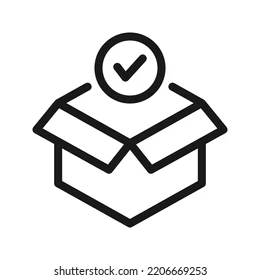
Ready Stock for Bulk Purchase

Dedicated Account Managers
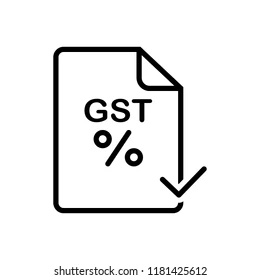
5% GST Benefits for Eligible SEZ and Edu
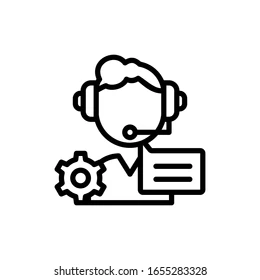
Technical Support Available

1-Year Manufacturer Warranty



